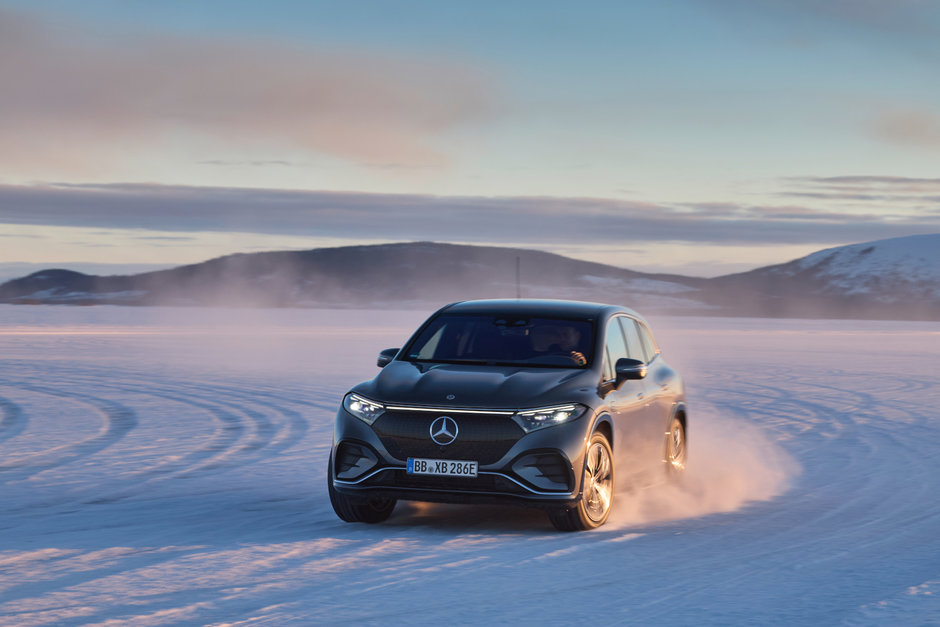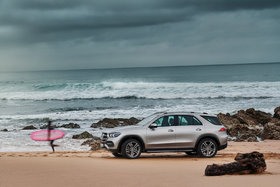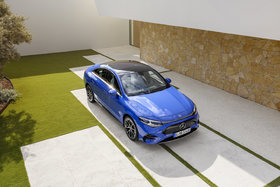Driving an Electric Mercedes-Benz Vehicle in Winter: How to Optimize Range and Ensure Comfort
November 22 2024,

Winter driving in an electric Mercedes-Benz combines luxury and sustainability, but the colder months can pose challenges for range and comfort. This guide is structured into ten essential sections, addressing how to maximize efficiency, enhance comfort, and make the most of your Mercedes-Benz EV during winter.
1- Understanding Winter’s Impact on EV Range
Cold weather affects electric vehicle range primarily due to increased energy demands for cabin heating and reduced battery efficiency in lower temperatures. A Mercedes-Benz EV may experience a 20-30% reduction in range in sub-zero conditions. For example, an estimated range of 400 km could drop to approximately 280-320 km, depending on driving habits and temperature.
To mitigate this, understanding your vehicle’s energy consumption and planning accordingly is essential.
2- Precondition Your Cabin and Battery
Preconditioning is one of the most effective ways to optimize range and comfort. Using the Mercedes me app, you can warm the cabin and battery before starting your journey while the vehicle is still plugged in. This minimizes the energy required for heating during the drive and ensures the battery operates at optimal efficiency.
This feature not only preserves range but also eliminates the need to enter a cold cabin on winter mornings.
3- Use Heated Seats and Armrests
Mercedes-Benz EVs offer innovative solutions for winter comfort, including heated seats and, in some models, heated armrests. These targeted heating options provide warmth directly to passengers, reducing the need to use energy-intensive cabin heating. By relying on these features, you can conserve battery power while enjoying a luxurious and cozy environment.
4- Leverage Eco Driving Modes
Eco driving modes in Mercedes-Benz EVs are specifically designed to optimize energy usage. When engaged, this mode adjusts throttle response, limits power output, and manages energy-intensive systems like heating and cooling. This is particularly helpful in winter when every kilometre of range matters.
The result is a smoother driving experience that prioritizes efficiency without compromising on comfort.
5- Optimize Routes with Navigation and Electric Intelligence
The Navigation with Electric Intelligence system takes winter driving to the next level. It plans routes by factoring in weather, topography, traffic, and the availability of charging stations. For winter trips, this system ensures that you’re never far from a charging point and helps minimize energy consumption by avoiding congested routes or steep inclines.
This intelligent tool reduces range anxiety and enhances confidence during winter travel.
6- Charging Tips for Winter
Charging in winter requires specific considerations to maintain battery health and efficiency. For daily use, it’s best to charge to 80%, as this prolongs battery life. However, for longer trips in colder conditions, charging to 100% may be necessary to maximize range. Charging immediately after driving, when the battery is warm, can also improve charging efficiency.
The Mercedes me Charge network simplifies the process of finding compatible chargers, making winter charging stress-free.
7- Adjust Regenerative Braking Settings
Regenerative braking is an excellent feature for recapturing energy, but it requires adjustment in winter conditions. On icy or snowy roads, high regenerative braking levels might cause sudden deceleration, affecting traction. Switching to a lower setting provides smoother braking and enhances safety on slippery surfaces.
Understanding how to modify regenerative braking settings is key to maximizing range and ensuring stability in winter conditions.
8- Maintain Proper Tire Pressure
Cold temperatures can lower tire pressure, increasing rolling resistance and reducing efficiency. Regularly checking and maintaining tire pressure to manufacturer-recommended levels is critical for preserving range and ensuring safe handling. For optimal performance, consider switching to Mercedes-Benz-approved winter tires, which improve traction and stability on snowy or icy roads.
9- Monitor Battery Performance
Lithium-ion batteries are sensitive to extreme temperatures, and cold weather can temporarily reduce their capacity. To maintain performance, always precondition the battery before driving and avoid letting the charge drop below 20%. Regular software updates through Mercedes-Benz Connected Services also help keep the battery operating at its best.
For long-term care, use Level 2 chargers whenever possible and avoid frequent use of DC fast chargers in extremely cold conditions.
10- Take Advantage of Winter-Specific Features
Mercedes-Benz EVs are equipped with features specifically designed to make winter driving easier. These include advanced driver assistance systems like 4MATIC all-wheel drive, which provides precise torque distribution for enhanced traction. Additional systems like Active Distance Assist DISTRONIC and Active Steering Assist offer extra support in challenging conditions.
Combined with heated mirrors, adaptive headlights, and pre-entry climate control, these features ensure that winter driving is both safe and comfortable.
Conclusion
Driving an electric Mercedes-Benz in winter is a luxurious and efficient experience when you utilize the right features and adopt smart driving habits. From preconditioning the cabin and leveraging Eco driving modes to planning routes with Electric Intelligence, Mercedes-Benz equips its EVs with everything needed to tackle winter’s challenges.
By following these tips, you can optimize range, enhance comfort, and enjoy the seamless performance of your Mercedes-Benz electric vehicle all winter long.





